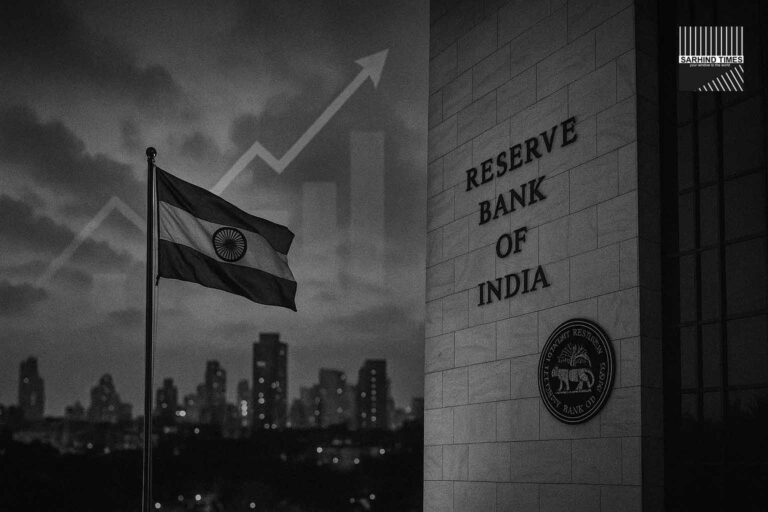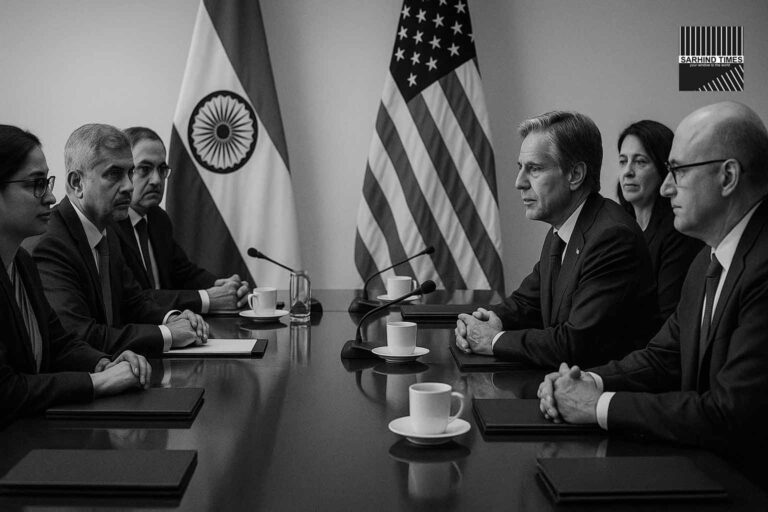By Sarhind Times Bureau | New Delhi | October 15, 2025
Introduction: The New Chapter in India–US Postal Trade
Barely days after India Post resumed full postal connectivity with the United States, the Business Standard has detailed a significant policy shift—all India-to-US postal shipments will now attract a flat 50% customs duty, in line with the U.S. Customs and Border Protection’s (CBP) updated de minimis regime.
The move, while tightening cost structures for exporters, finally brings clarity to a trade channel that had been paralysed for nearly two months since late August. The new rules end weeks of uncertainty for micro, small and medium enterprises (MSMEs), cross-border sellers, and diaspora consumers, who had struggled with parcel detentions and rerouting costs during the suspension.
With postal services now reactivated and a clear duty framework in place, industry observers describe this as a “reset moment” for India’s low-value export lanes — one that balances compliance, transparency, and global trade continuity.
Background: Why Postal Services Were Suspended
The disruption began in late August 2025, when the U.S. Customs and Border Protection (CBP) implemented new regulations under its “de minimis reform”, mandating pre-paid duty collection for inbound postal consignments.
Previously, parcels under $800 in value enjoyed duty-free entry, enabling thousands of Indian MSMEs to ship handicrafts, textiles, and electronics via India Post without upfront tax. However, following reports of mis-declaration and under-invoicing, U.S. authorities enforced a flat 50% customs duty across postal shipments, irrespective of declared value, to ensure parity and revenue compliance.
India Post, lacking immediate IT integration with U.S. customs databases, temporarily suspended US-bound shipments, while private courier operators filled the gap at a higher cost.
The resumption on October 15 came only after India Post completed a compliance overhaul—upgrading its electronic data interchange (EDI) systems, customs forms, and payment rails to match U.S. import processing standards.
“The suspension was necessary to avoid bottlenecks,” a senior Department of Posts official said. “Now, with full integration and duty prepayment channels, India Post can operate seamlessly under the new CBP regime.”
The New Policy: A Flat 50% Customs Duty
According to Business Standard, U.S. authorities will now impose a uniform 50% duty on all postal parcels arriving from India, regardless of commodity or declared value.
This change shifts the entire customs payment responsibility to the sender’s side—meaning Indian exporters and sellers must pay duties upfront at the time of dispatch.
Key features of the new framework include:
- Flat 50% duty applicable to all US-bound postal parcels.
- Prepayment through India Post’s upgraded IT system before dispatch.
- Mandatory inclusion of HS codes, declared values, and item details.
- Enhanced customs data sharing between India Post and U.S. CBP.
The intent is to reduce parcel detentions, manual inspections, and revenue leakage at U.S. ports of entry.
“The 50% duty threshold simplifies processing but will impact pricing for small-value goods,” said Rajesh Goenka, a cross-border logistics consultant. “Exporters must now factor duties into their checkout workflows and e-commerce pricing.”
Impact on MSMEs and E-Commerce Exporters
For India’s 6.3 crore MSMEs, especially those dealing in crafts, jewelry, apparel, and small electronics, the announcement has mixed implications.
✅ Advantages:
- Predictability: The flat rate eliminates ambiguity around valuation disputes.
- Speed: Pre-paid duties prevent customs delays and parcel holds.
- Transparency: Simplified compliance builds exporter credibility.
⚠️ Challenges:
- Higher costs: Margins will tighten, especially for low-value items below ₹10,000.
- System readiness: Smaller exporters may face initial friction integrating duty computation.
- Cash-flow strain: Upfront duty collection could affect liquidity for micro-exporters.
“The policy is not punitive but procedural,” said Ankita Sharma, a handicraft exporter from Jaipur. “If managed well, it could make our trade cleaner and more efficient.”
Integration Challenges: IT and Compliance Readiness
India Post has begun integrating automated duty calculation and prepayment modules within its Parcel Life Cycle System (PLCS).
The platform now supports:
- Automated duty computation based on declared value and item category.
- Digital customs declarations (CN22/CN23) with barcode linkage.
- Real-time validation with CBP’s data exchange interface.
The Department of Posts confirmed that testing of the duty payment gateway and tracking systems was completed last week, with pilot shipments cleared without detention.
“We’ve built a unified workflow from booking to customs clearance,” said Vineet Pandey, Secretary (Posts). “Our goal is to make postal exports as reliable as express courier channels.”
However, consultants caution that system errors or data mismatches in early weeks could temporarily affect parcel timelines.
Pricing Adjustments: Exporters Redefine Margins
MSME exporters are now recalculating their unit economics to absorb or pass on the 50% duty impact.
For example:
- A ₹2,000 handicraft item shipped earlier with minimal documentation will now incur an additional ₹1,000 in duty.
- Sellers using e-commerce platforms like Etsy, eBay, or Amazon Global must integrate duty costs into checkout systems or offer “duty-paid pricing.”
Export associations are advising members to adopt transparent pricing models, ensuring buyers know total landed costs upfront.
“The duty must be treated as a part of product cost, not an afterthought,” said Prakash Menon, Chairperson, Federation of Export Promotion Councils (FIEO). “This clarity builds trust with global consumers.”
Transition Phase: Three Weeks of Realignment
Logistics experts say the next three weeks will be critical for stabilising postal trade flows.
Both India Post and exporters must fine-tune operational aspects, such as:
- Synchronising data fields in export manifests.
- Updating return-to-origin (RTO) mechanisms for undelivered parcels.
- Aligning HS codes and description accuracy to avoid customs red flags.
Trade bodies like EEPC India and GJEPC plan to set up exporter helpdesks in Delhi, Mumbai, and Jaipur to assist first-time users returning to the U.S. postal network.
“The restart window is an opportunity for MSMEs to adopt best practices,” said Nirupama Rao, an international trade advisor. “Clean data and compliance are the new passport to global competitiveness.”
Comparative Analysis: Courier vs. Postal Economics
During the suspension period, exporters had shifted to express courier operators like FedEx, DHL, and UPS, paying 2–3 times higher shipping rates.
Now, with postal services resuming, India Post once again offers affordable, trackable logistics, albeit with duty inclusion.
| Parameter | India Post (Resumed) | Private Courier (Express) |
| Average Delivery Time | 10–14 days | 5–7 days |
| Cost (500g Parcel) | ₹1,200–₹1,500 + duty | ₹3,000–₹4,000 |
| Duty Collection | Prepaid, Flat 50% | Varies by item and service |
| Target Segment | MSMEs, Retail Exporters | Enterprises, Urgent Shipments |
Analysts believe that with improved reliability and digital integration, India Post could regain a 30–35% share of outbound MSME parcels to the U.S. by early 2026.
Policy and Diplomatic Context
The updated duty structure emerges against the backdrop of evolving U.S. import norms, aimed at closing duty loopholes under Section 321 of U.S. Customs Law.
India’s cooperation demonstrates growing bilateral alignment on trade transparency, a theme also reflected in the India–U.S. Trade Policy Forum held earlier this year.
“The U.S. move is not anti-India,” said Dr. Arvind Panagariya, trade economist. “It reflects global tightening of de minimis systems. The upside is India Post’s accelerated digital modernisation.”
The Indian government has requested reciprocity discussions, seeking streamlined access for U.S.-bound e-commerce under B2C exports, which remain under India’s Foreign Trade Policy (FTP 2023–28).
Industry Reaction: Realism and Readiness
Reactions across trade circles range from cautious optimism to pragmatic acceptance.
- The Confederation of All India Traders (CAIT) hailed the resumption as “a victory for clarity.”
- The Export Promotion Council for Handicrafts (EPCH) urged members to adapt quickly.
- The All India Postal Employees Union praised the department for “achieving global compliance milestones.”
“Yes, costs are up — but uncertainty is gone,” said Rohit Jain, an exporter of silverware from Moradabad. “That’s worth every rupee.”
Digital Governance and Cross-Border Commerce
India’s IT upgrades for the postal system align with the broader “Ease of Doing Exports Digitally” initiative.
By integrating postal exports with the ICEGATE customs portal, India aims to digitally synchronise declarations, payments, and analytics for every international parcel.
This sets the stage for:
- Real-time export analytics for policymakers.
- Automated rebate processing under RoDTEP (Remission of Duties and Taxes on Export Products).
- Future integration with blockchain-based customs tracking systems.
“Digitisation is redefining the postal economy,” said Prof. S. Chandrasekhar, IIT Madras. “The postal lane is no longer the poor cousin of couriers — it’s becoming the affordable backbone of e-commerce exports.”
Looking Ahead: Balancing Costs with Compliance
Experts believe the 50% duty regime, though steep, could ultimately create a level playing field for compliant exporters.
The policy encourages transparency, reduces false declarations, and establishes India as a reliable participant in global logistics governance.
“Regulatory discipline attracts investor confidence,” said Dr. Shubham Bhasin, economist at CII. “Over time, the cleaner systems benefit India’s brand in cross-border trade.”
For small businesses, success will now depend on automation, transparency, and adaptability — ensuring the spirit of entrepreneurship endures even under stricter rules.
Conclusion: From Disruption to Reinvention
The India–U.S. postal reboot marks more than a technical policy change — it represents a recalibration of how small exporters engage with the global economy.
By embedding digital compliance, prepaid duties, and data transparency, India Post has positioned itself as a 21st-century logistics player ready to compete globally.
The challenge now is to educate, equip, and empower MSMEs to thrive in this new landscape — where every parcel carries not just goods, but trust.
As the first new shipments leave Indian shores under the 50% duty framework, the message is clear:
Adaptation is the new competitiveness.
#Ecommerce #Exports #Postal #USIndia #MSME #Trade #DigitalIndia #Logistics #IndiaPost #SarhindTimes
























+ There are no comments
Add yours